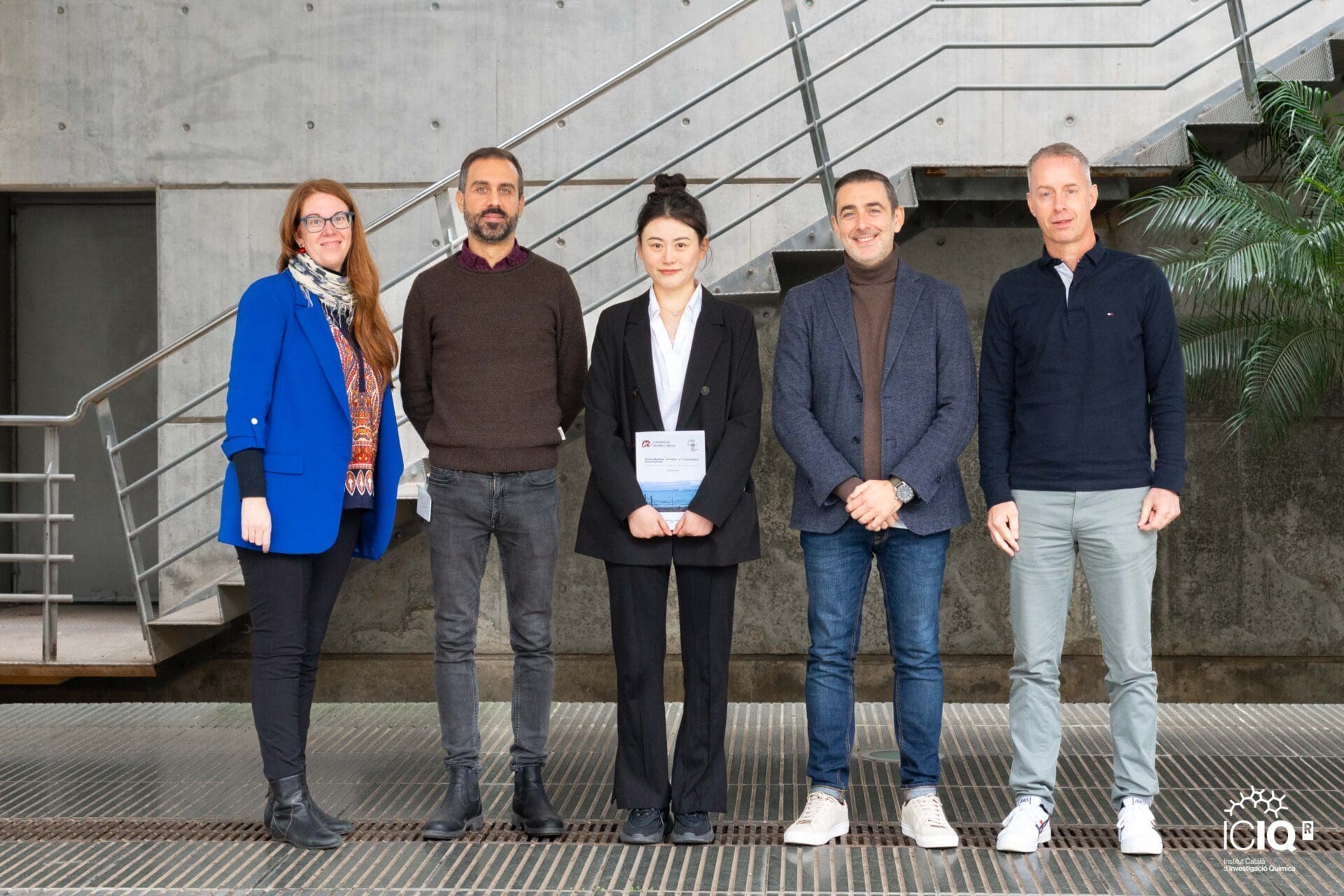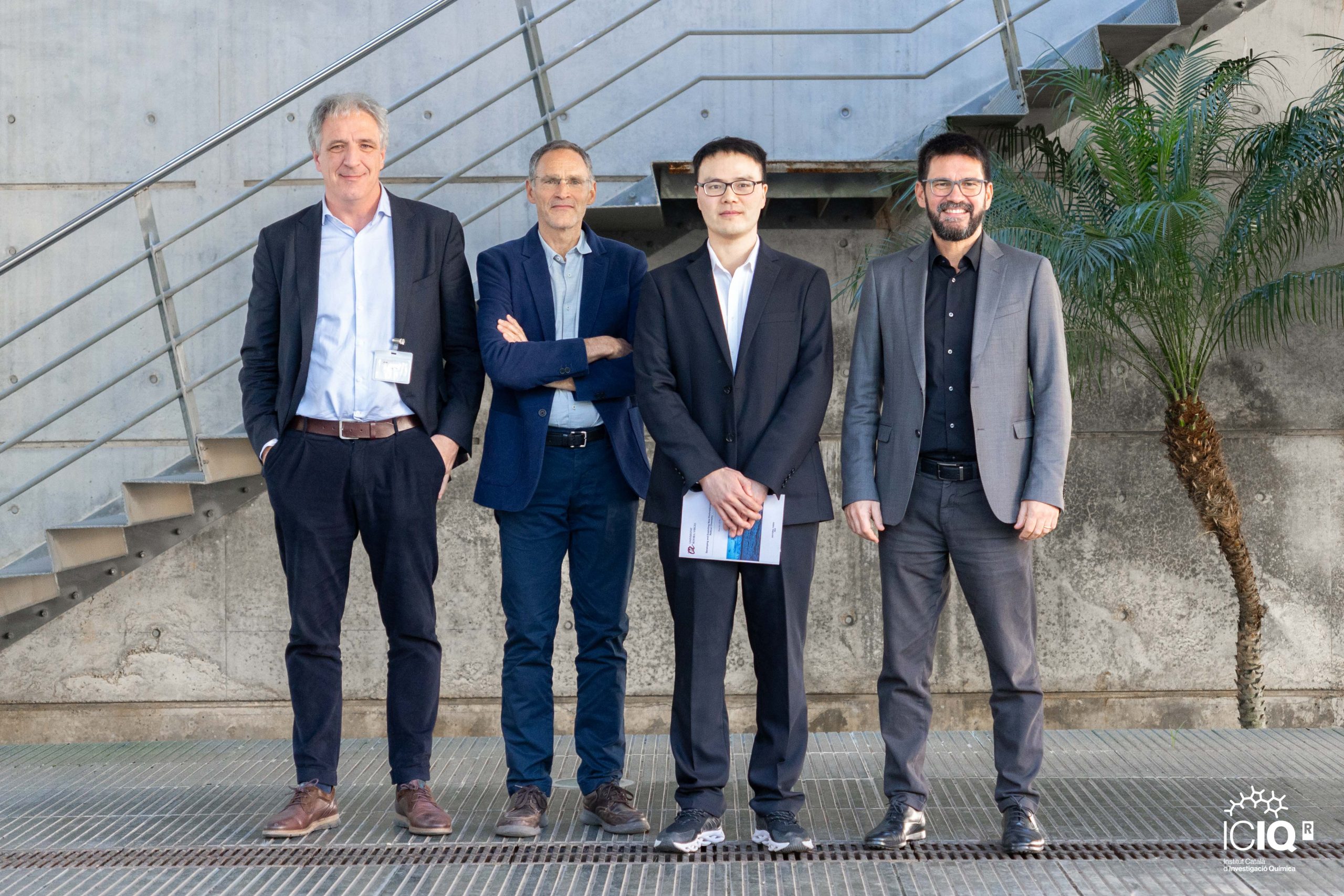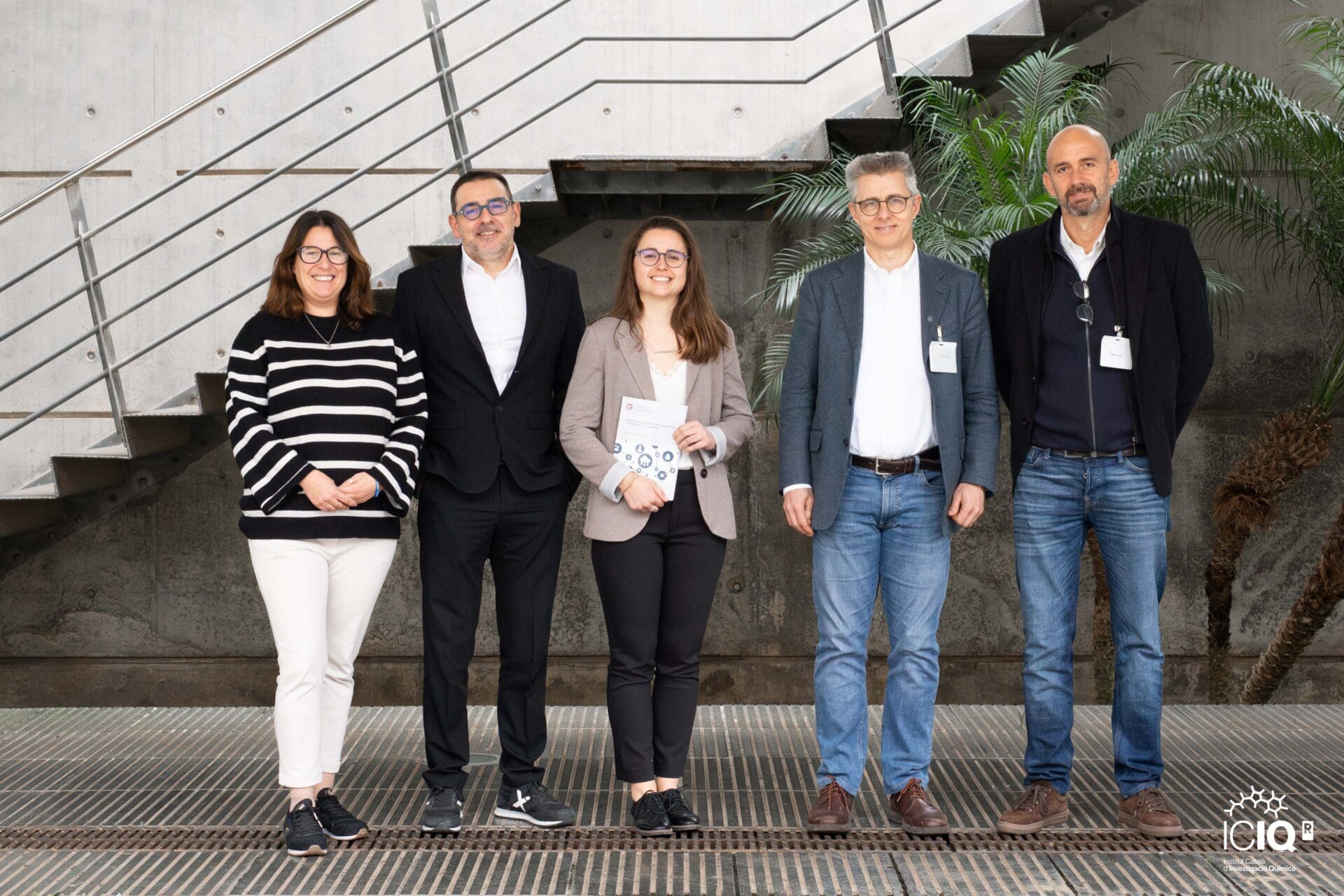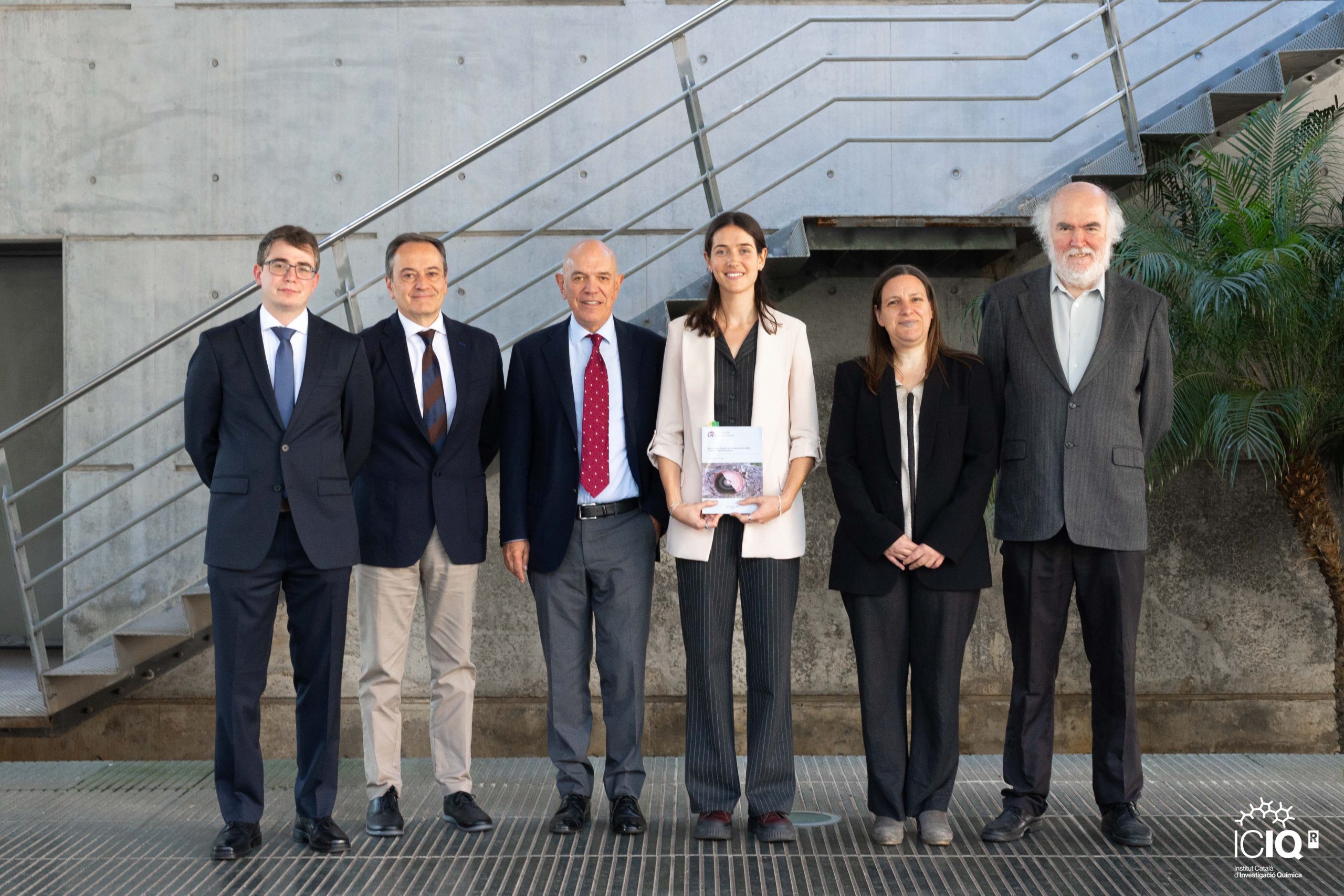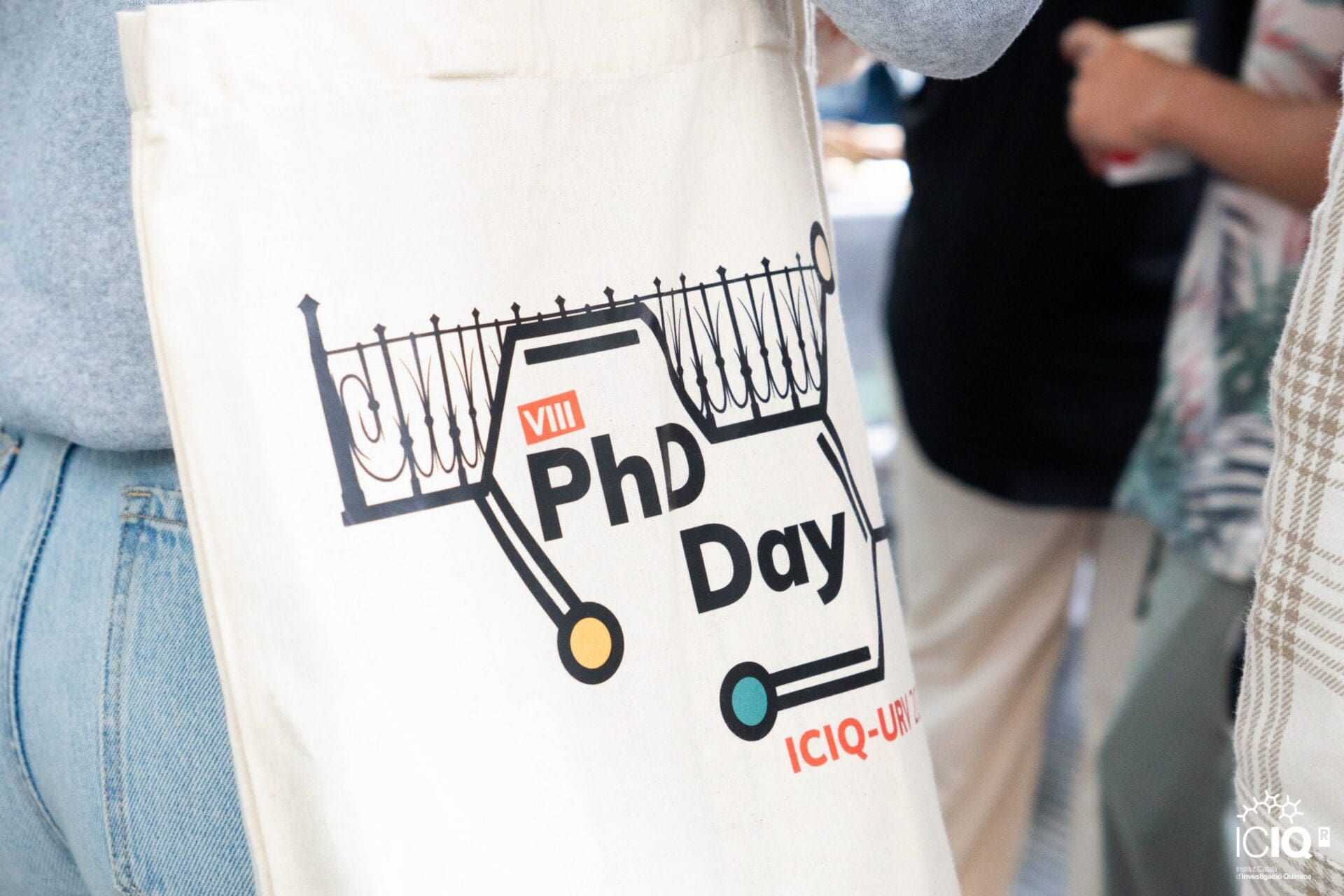New Doctor at ICIQ!
Giuliano Carchini, PhD student under the supervision of Prof. Núria López, has defended his PhD Thesis entitled “A First Principles Investigation of the Adsorption and Reacctions of Polyfunctionalized Molecules on Oxides and Metals” (assigned to the Department of Physical and Inorganic Chemistry of the Universitat Rovira i Virgili) publicly on January 8th at the ICIQ auditorium.
The members of his evaluation committee were: Dr. Atsushi Urakawa (ICIQ), Dr. Francisco Hernández Ramírez (Institut de Recerca en Energia de Catalunya) and Dr. Mónica Calatayud Antonino (Unviersité Paul et Marie Curie).
Abstract:
In this Thesis, we have studied the adsorption on oxides and metals by means of Density Functional Theory simulations plus a semiempirical correction for dispersion. First we have investigated rutiles, which have the same unit cell and can be mixed with new properties. When impurities are present, semi conductors are found on the surface and metallic compounds in the bulk and oxygen reverse this behaviour. Also, we can epitaxially grow any rutile on top of another. Next we have addressed the adsorption of alcohols on Titania. Our results indicate that both the energies and the geometries of adsorption are not scalable with the chain length and the number of hydroxyls. This warns against the use of small alcohols as surrogates. Afterwards, the conversion of ethylene glycol and 1,3-propanediol to alkenes on TiO2 has been analyzed. The former evolves easily to the products while the latter pass through a high energy intermediate. The process is not catalytic, since a vacancy is healed after each cycle. To assess the effect of the water environment, we have investigated the hydrophobicity of Rare-Earth Oxides. The reason behind this property is the particular water arrangement which is related to the distance between the surface ions. We altered such motif doping the surface thus modifying the mean distance between the ions. Finally, we developed new parameters for dispersion corrections in metals from the computed polarizability. The procedure is first principles and can be employed in defective surfaces.
Related news

Let's create a brighter future
Join our team to work with renowned researchers, tackle groundbreaking
projects and contribute to meaningful scientific advancements






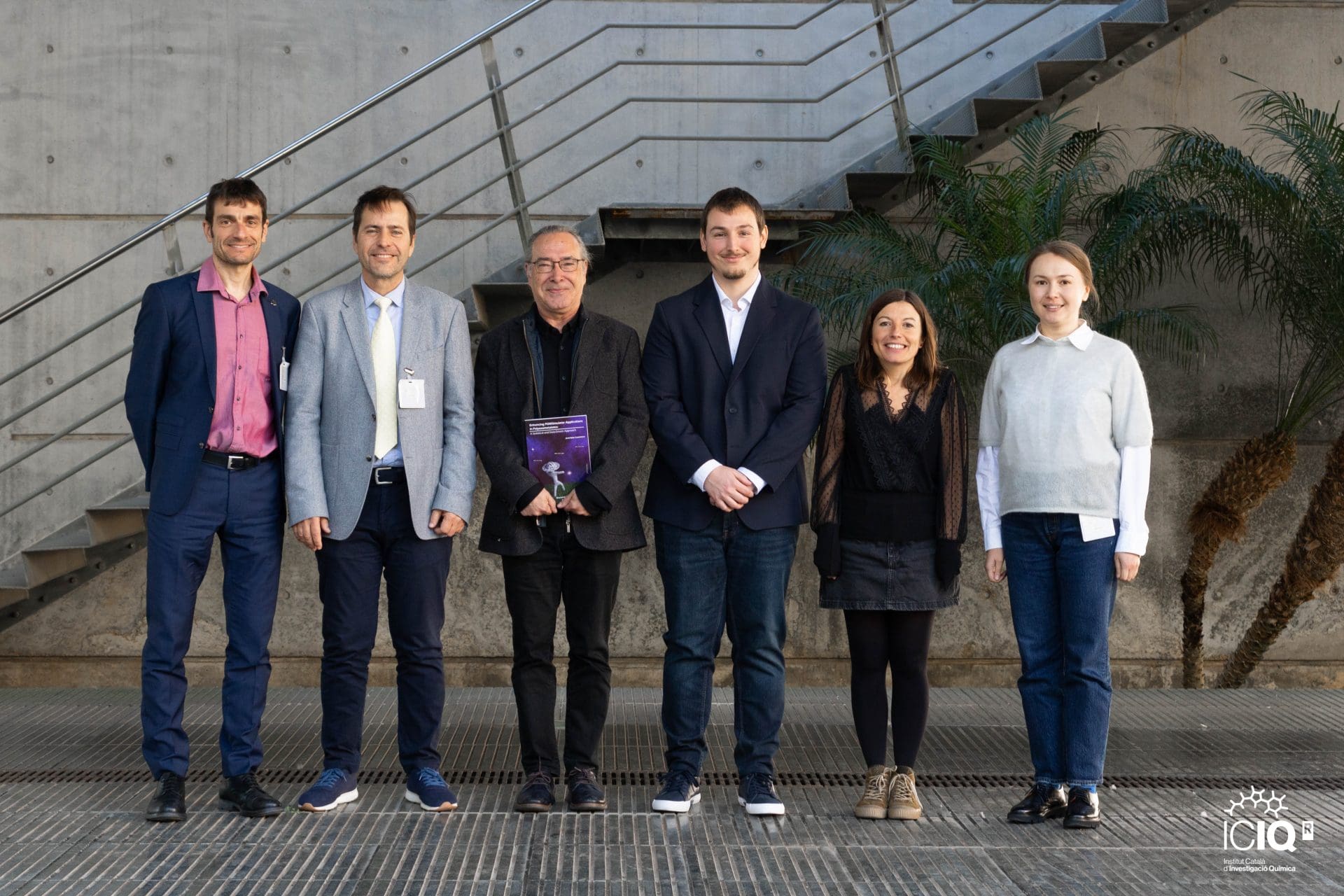
 20-12-2024
20-12-2024 
